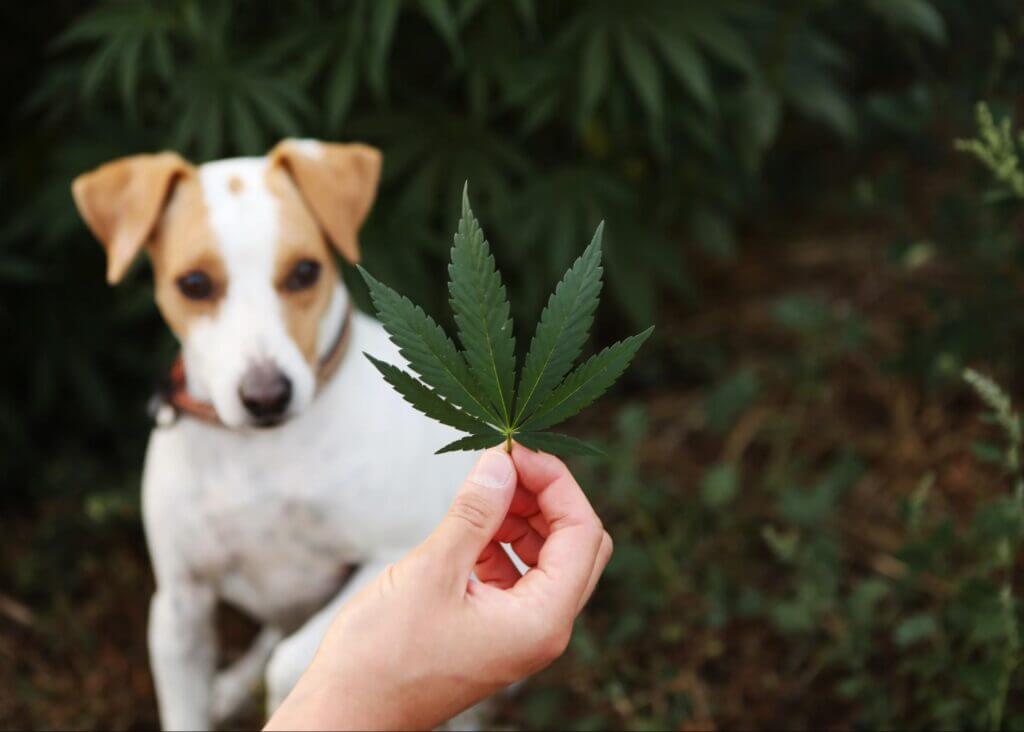Blog | CBD Oil Blog | Dogs
Unraveling the Rich History of Hemp From People to Pets
January 1, 2024
Written By: Earth Buddy Team

Hemp’s value extends far beyond the oils it produces, encompassing a wide array of applications in various arenas. In this history of hemp, and in modern times, hemp bast fiber and other compounds have been a key ingredient in the creation of building materials, food, and fiber. Hemp seeds are known for their health benefits, the fibers work well for the textile industry, and the oils are now known to promote physical and mental well-being.
This multifunctionality of hemp highlights its significance and the vast potential it holds for diverse industries, from construction and fashion to food and healthcare. Looking at history, you’ll see that we weren’t always where we are now with hemp. In fact, it was once even more popular than it is today, and its usage was eliminated for quite some time due to society and the government.
The First Hemp Crops in Ancient China
The first hemp crop cultivation dates back to 2700 BC in ancient China. Fiber from hemp was used for gathering food, the domestication of animals, and overall advancement of society back in those days. The hemp fibers were used for the creation of materials to hold food and rope to help hold animals nearby.
It’s likely that as people migrated, hemp farmers introduced hemp crops to Europe, where by the 16th century, it had become widely cultivated as an agricultural commodity primarily for its hemp fiber. During this period, hemp seeds were commonly cooked with barley or other grains and consumed as a part of the diet.
Industrial Production of Hemp Plants in America
Hemp was introduced to New England by the Puritans in 1645, primarily as a source of fiber for textile production. It wasn’t until around 1775 that hemp cultivation began to expand beyond New England, first to Virginia, then to Kentucky, where its growth rapidly accelerated.
Hemp peaked in the United States in the mid 1800s during World War I and World War II as industrial hemp became more popular. Industrial hemp production was particularly important during these time periods in Illinois, Iowa, Indiana, Kentucky, Wisconsin, and Minnesota.
After the world wars, there was a global decline in industrial hemp production. In the mid-20th century, the introduction of other fiber crops like sisal, cotton, and jute, as well as the rising popularity of synthetic fibers over natural ones, further contributed to the decline in the hemp industry. However, despite these shifts in agricultural trends, a number of farmers continued to grow hemp for the production of various products during this time.
The Marijuana Tax Act of 1937
The Marijuana Tax Act of 1937 marked a crucial juncture in the United States’ legislative history of cannabis. Understanding its significance requires an examination of the context in which it was enacted. Historically, before the 1930s, marijuana was commonly utilized in the U.S. for both medicinal and recreational purposes. However, increasing concerns about its alleged adverse effects, compounded by racial and xenophobic biases led to a demand for federal regulation.
The Act itself introduced a tax on cannabis transactions, which, in effect, made the sale or purchase of marijuana illegal without a federal license – a license that was nearly impossible to obtain. Additionally, the Act required detailed record-keeping from those handling cannabis, creating substantial obstacles to its legal cultivation and distribution.
The consequences of the Act were significant. It played a pivotal role in criminalizing cannabis, adding to its societal stigmatization and disproportionately impacting minority communities, leading to widespread arrests and extensive harm. Contrary to its intended purpose, the Act did not eradicate cannabis use; rather, it drove the market underground. Notably, the Act also inadvertently sparked activism and research into the potential medical applications of cannabis, paving the way for future legalization efforts.
The Controlled Substances Act
Until the late 20th century, hemp use was an integral part of American industry, widely used for making products like hemp paper, rope, sails, clothing, and even medicine. This all began to change around 1906 when there was a significant increase in pharmaceutical regulations, accompanied by a growing negative perception of Cannabis sativa.
This shift in attitude and policy led to drastic changes; farmers stopped cultivating hemp, pharmacies ceased stocking cannabis-based products, and the sale of cannabis was met with severe legal consequences, including imprisonment.
The situation further intensified with the enactment of the Controlled Substance Act of 1970. This legislation categorically classified cannabis as a Schedule I drug, a designation indicating that cannabis was seen as having no legitimate medical use and a high potential for abuse, including the risk of psychological and physical dependence. By lumping all cannabis products into this category, the Act effectively banned both medical and recreational use of cannabis across the board.
This classification marked a significant turning point in the legal status of cannabis, representing a complete departure from its earlier uses and contributions to various industries. The implications of this act were far-reaching, not only curtailing the cultivation and use of hemp but also stigmatizing cannabis as a whole and eliminating its availability for any legal use, whether for health purposes or leisure.
The Controlled Substance Act’s strict regulation reflected and reinforced the growing societal and legal aversion to cannabis, setting the stage for the complex legal and cultural battles over cannabis use and regulation in the decades to follow.
Agriculture Improvement Act
The Agriculture Improvement Act of 2018, commonly known as the 2018 Farm Bill, marked a significant shift in the United States’ approach to hemp production. This pivotal legislation effectively reauthorized the cultivation of hemp across the nation, a notable change from its previous status.
By this Act, hemp and hemp seeds were removed from the Drug Enforcement Administration’s list of controlled substances. This removal legally opened doors for farmers to grow hemp, thereby reviving an industry that had been dormant due to legal restrictions.
The 2018 Farm Bill did more than just remove hemp from the Schedule I classification; it also established a specific legal definition for hemp. Under this new legislation, hemp is defined as a cannabis plant containing less than 0.3% Δ-9-tetrahydrocannabinol (THC) by dry weight.
Conversely, the term ‘marijuana’ now refers to cannabis products that contain more than 0.3% THC by dry weight at the time of harvest. This distinction based on THC content is crucial as it differentiates between plants used for industrial and commercial purposes (hemp) and those considered for their psychoactive properties (marijuana).
This legal differentiation has significant implications. It not only decriminalizes the production of hemp but also allows for its commercial and industrial use, opening up opportunities in various sectors such as textiles, construction, food, and more. The reclassification under the Farm Bill reflects a growing recognition of the different uses and benefits of cannabis plants, depending on their THC content.
The History of Hemp Products & CBD For Pets
The consideration for use in pets is thought to have begun when the endocannabinoid system was found to exist in all mammals in the early ‘90s. The breakthrough in scientific understanding marked a new era in research, particularly highlighting the benefits of hemp-derived components such as cannabidiol or CBD for dogs and cat’s health.
Notable studies published by hemp researchers in respected journals like those found in the Journal of Veterinary Internal Medicine and other peer-reviewed research articles have shown encouraging outcomes regarding the use and safety of CBD for various pet health conditions. The research suggests CBD’s potential to calm dogs and cats, supporting a healthy inflammatory response, and even promoting a healthy coat and skin.
The market has since seen an influx of pet-specific CBD for dogs and cats, including treats, oils, topical applications, and chews, meeting the increasing demand for natural, scientifically-supported pet wellness solutions. However, this also means not all products are the same, especially since it’s an unregulated market.
This makes the responsibility of finding a high quality product land on the pet parent. Searching for companies that are transparent about their products, like Earth Buddy, is extremely important. Perhaps the most important task is to look for the lab test results, sometimes referred to as a third party analysis or a certificate of analysis, to determine safety and what is exactly in the product. The company can claim anything and it’s up to you to fact check.
The FDA Has Made a Claim
There is only one FDA-approved product in cannabis medicine for pets. It’s plant-based (not synthetic) and goes by the name of Epidiolex. This is the only product that is regulated by the government for pets and humans as of this writing. It’s prescribed for neurological issues, but it’s incredibly expensive and difficult to obtain.
For further reading, we recommend:
- https://www.ncbi.nlm.nih.gov/pmc/articles/PMC7571072/#:~:text=The%20cultivation%20of%20hemp%20dates,the%20hemp%20plant%20%5B5%5D
- https://www.ers.usda.gov/webdocs/publications/41740/15853_ages001ec_1_.pdf?v=0
- https://edis.ifas.ufl.edu/publication/AG458
- https://njaes.rutgers.edu/fs1312/#:~:text=transported%20to%20market.-,Fiber,pulp%2Fpaper%2C%20and%20more
- https://www.researchgate.net/publication/310388972_Industrial_Hemp_in_North_America_Production_Politics_and_Potential
- https://www.ers.usda.gov/webdocs/publications/41740/15853_ages001ec_1_.pdf?v=0
- https://www.sciencedirect.com/book/9780323909105/industrial-hemp
- https://www.ncbi.nlm.nih.gov/pmc/articles/PMC9559627/
- https://www.ncbi.nlm.nih.gov/pmc/articles/PMC7399642/
- https://www.ncbi.nlm.nih.gov/pmc/articles/PMC1574255/
- https://www.ncbi.nlm.nih.gov/pmc/articles/PMC7439947/
You Might Also Enjoy
Your dog’s skin is their largest organ making dog skin care a crucial part of…
Like us, our dogs, and other mammalian species, cats have an endocannabinoid system. This system…
Learning how to calm a dog down is an essential skill to have in your…







